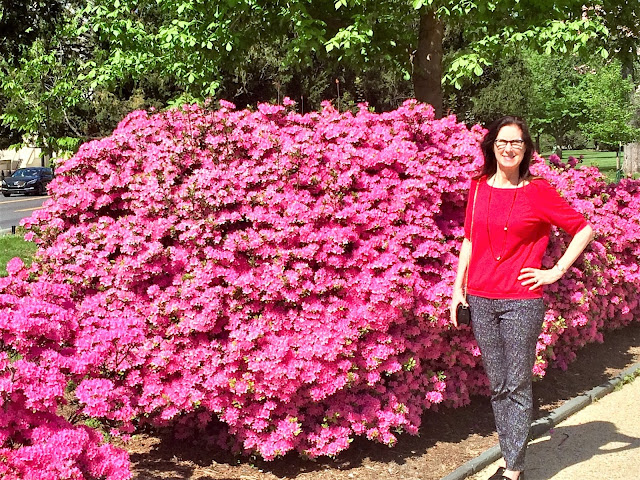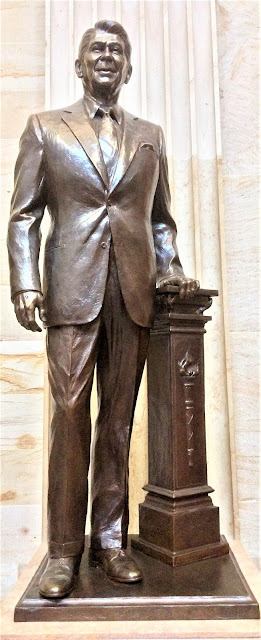We've been enjoying touring the many sights in D.C. Susan especially loves behind-the-scenes tours.
So, when Susan had the chance to tour the U.S. Capitol with a Senate staff member, she seized the opportunity. The chance arose when Susan told an Orlando friend that we were living in D.C. The friend has a nephew who serves as a legislative assistant to a Senator. Before we knew it, we were enjoying a behind-the-scenes tour of the U.S. Capitol with that nephew.
Our guide was extremely knowledgeable, since he had given similar tours many times in the past to relatives and friends. The tour included the usual things on the public tour and also some not-so-public sights.
We visited the soaring rotunda of the Capitol. Around the base of the dome is a frieze painted in white and dark brown. The frieze is 8' tall and 300' long and depicts scenes from American history. What makes the frieze so remarkable is that it appears to be a three-dimensional relief, even though it is a flat painting. You can see for your self below.
 |
| Frieze of American History around the base of the Capitol dome: The Burial of DeSoto by Constantino Brumidi. |
 |
| Frieze of American History around the base of the Capitol dome: Captain Smith and Pocahantas by Constantin Brumidi |
In the rotunda are scenes and persons from American history depicted in paintings, statues and other sculptures. One sculpture (pictured below) caught Greg's attention.
 |
| Conflict of Daniel Boone and the Indians, 1773, by Enrico Causici (1826–1827) |
The rotunda has many statues including the one below. What makes this statue interesting is the base, which includes a piece of the Berlin Wall.
 |
| The thin black and white horizontal layer is a piece of the Berlin Wall. |
While walking through a back hallway, we spotted a masterpiece by Albert Bierstadt.
 |
| Discovery of the Hudson River by Albert Bierstadt (1874) |
Around a corner, we discovered the former entrance to the West Front of the Capitol, a large pair of bronze doors. The doors reminded us Ghiberti's Gates of Paradise in Florence and Rodin's Gates of Hell.
 |
| A close up of one panel: Iron and Electricity |
 |
| Some random hottie with expert guide Brandon |
Around another corner, we ran into a former U.S. president.
On the floor below the rotunda is a large circular room. The center of the room is marked with a white marble compass. The compass is the very center of the original District of Columbia, as envisioned and mapped by engineer Pierre L'Enfant in 1791. The compass denotes the four directions and the four quardrants of the city.
We visited the old Senate chamber.
Susan especially enjoyed visiting the old Supreme Court chamber, since she is a self-described law nerd.
 |
| A bust of Chief Justice John Marhsall |
 |
| Even a chief justice needs a place to hang a robe when not wearing it |
Our guide pointed out many interesting sights, including the paw prints in the concrete floor pictured below.
Apparently, when the concrete was poured in the early 1800's, the presence of many cats in the Capitol was tolerated. So, paw prints were an unavoidable occurrence. The cats were tolerated because they controlled the rat and mice population.
Next Up: The best part of the tour.

















































